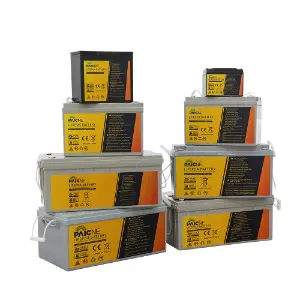Understanding the inner workings of the Lithium Iron Phosphate Battery is essential for anyone involved in the field of renewable energy and electric vehicles. These batteries, known for their stability and efficiency, are becoming increasingly popular due to their unique advantages over other types of lithium-ion batteries. This article delves into the intricate details of how the Lithium Iron Phosphate Battery functions, providing insights into their chemical reactions, charge-discharge processes, and overall performance characteristics.

The Lithium Iron Phosphate Battery operates based on the movement of lithium ions between the positive and negative electrodes during the charging and discharging cycles. The battery consists of a lithium iron phosphate cathode, a graphite anode, and a lithium salt dissolved in an organic solvent, which serves as the electrolyte. The chemical formula for lithium iron phosphate is LiFePO4, where lithium ions are embedded within the iron phosphate structure.
During the charging process, lithium ions are extracted from the lithium iron phosphate in the cathode and move through the electrolyte to the anode, where they are stored in the graphite lattice. This movement of lithium ions is the result of an electric field applied across the battery terminals. The electrons, which are the actual charge carriers in an electrical circuit, flow from the anode to the cathode through the external circuit, providing energy to power devices.
Conversely, during the discharging process, the lithium ions are released from the anode and return to the cathode, releasing energy as they go. The electrons flow in the opposite direction, from the cathode back to the anode, completing the circuit and providing power to the external device. This reversible chemical reaction is what allows the Lithium Iron Phosphate Battery to be rechargeable and capable of multiple charge-discharge cycles.
One of the key strengths of the Lithium Iron Phosphate Battery is its flat voltage profile. Unlike other lithium-ion batteries, which exhibit a steep voltage drop towards the end of discharge, the Lithium Iron Phosphate Battery maintains a relatively constant voltage output. This characteristic makes them ideal for applications where a stable power supply is crucial, such as in electric vehicles and renewable energy storage systems.
Another aspect of the working mechanism of the Lithium Iron Phosphate Battery is their thermal stability. The iron phosphate structure in the cathode material is less reactive than other materials used in lithium-ion batteries, which contributes to a lower risk of thermal runaway. This makes the Lithium Iron Phosphate Battery safer to operate and less prone to fires or explosions, a significant advantage in applications where safety is a concern.
The battery's lifespan is also a result of its working mechanism. The Lithium Iron Phosphate Battery is capable of withstanding a high number of charge-discharge cycles, often exceeding 2,000 cycles, which is significantly higher than many other types of lithium-ion batteries. This durability is due to the stable structure of the lithium iron phosphate material, which resists degradation over time.
In summary, the working mechanism of the Lithium Iron Phosphate Battery is rooted in the movement of lithium ions between the cathode and anode, facilitated by the applied electric field. Their flat voltage profile, thermal stability, and long cycle life are direct consequences of this mechanism, making them a preferred choice for many energy storage applications. As the technology continues to advance, the understanding and optimization of the Lithium Iron Phosphate Battery's working principles will undoubtedly play a critical role in shaping the future of energy storage and power management.
Get to know quickly
We are a professional lithium iron phosphate battery, solar energy storage system, industrial and commercial energy storage system manufacturer.
 +86-133 3592 3377
+86-133 3592 3377
 +86-4008833583
+86-4008833583
 Email: [email protected]
Email: [email protected]

Copyright © Zhejiang Paichen Energy Storage Group Co., Ltd All Rights Reserved.
Battery Energy System Manufacturer
